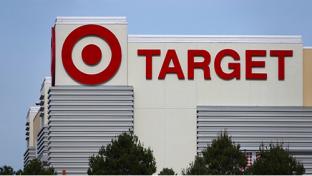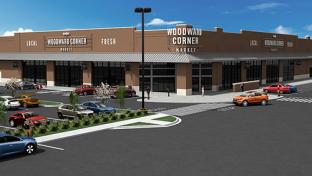Small Formats, Personalization and Other Ways to Make Your Stores Stand Out
I have this photograph of my grandfather, circa 1900, working in one of Barney Kroger’s first stores, in northern Kentucky. In it, he’s behind the counter with all of the products stacked up on shelves behind him. This was before the advent of self-serve groceries, which for those who know their grocery history, began in 1916 with Piggly Wiggly. It’s hard for many to imagine today what a radical notion it was then to allow shoppers to walk the aisles and actually pick their own products rather than have a grocery attendant do it for you.
Perhaps my grandfather would be smiling if he were around today to know that the job whose obsolescence he witnessed in the decades that followed after that photo was taken is back and very much in demand. Personal shoppers, whether they’re at an Amazon warehouse or your local supermarket, are driving large portions of retail overall, and the grocery segment specifically. The technology has changed from a written shopping list to a mobile app, but the convenience that motivates shoppers remains the same as it did 120 years ago.
Talk about déjà vu.
The same uprising that has brought back personal shoppers has also wrought changes among the bigger-is-better mindset of the ’80s and ’90s that led to the growth of superstores like Walmart and Target. The convenience, selection and lower-price mantra that drove both companies’ outsize growth – also powered by consumers who wholeheartedly embraced the “more is more” buying proposition – was upended in the aughts by ecommerce operators (read: Amazon) that could match them on price and beat them on selection and convenience, all without having to worry about the cost of that huge retail space, or the wages of the friendly associates who work there.
Enter Small Formats
One competitive solution for retail in general, and grocery in particular, has increasingly been the small-format store. Traditional supermarkets are evolving in two specific ways.
One is to literally get smaller, particularly in more urban/suburban areas. So, where a typical supermarket might have 40,000 square feet, small-format stores aim for about half of that. Whatever sacrifice is made selection-wise by having a smaller retail footprint is more than made up for by the novelty of small, which is driving shoppers into those stores.
Recently, FITCH worked with both Cub Foods and Sprouts on creating small-format stores, and the lesson they, as well as everyone in grocery, are learning is that often, what’s best for the shopper is the most difficult for the retailer.
The second solution has been the advent of the small-format store within the mega-store. If you haven’t recently, pull up to your nearest Walmart or Target, and you’re likely to be greeted by a store-within-a-store. In it, you’ll find grocery items, prepared foods and various convenience items placed right in front, thus saving consumers a trip through the auto parts section if all they need are milk and eggs. It’s also a novel way for the big-boxers to compete for the quick-trip shopper not only with traditional supermarkets, but also with convenience stores.
Finding Your Specialness
Let's face it: Operating a grocery store with brand-centered style and grace is hard work, and then you have to do it all again the next day. But store owners haven’t exactly helped either -- strict adherence to ease, rigor and uniformity has cost grocery its specialness. The vibrant future of grocery depends on its becoming special again.
The rise of ultra-convenience vis-à-vis small-format and personal shoppers/BOPUIS (buy-online-pick-up-in-store) are two responses to the shopper’s pursuit of rewarding experiences. One interesting twist on specialness is Kroger’s decision to get into the restaurant business. In 2017, the grocery chain launched its Kitchen 1883 restaurant, which currently has locations in Union, Ky., Cincinnati and Anderson Township, Ohio.
So, how does grocery today create the kind of specialness that leads to rewarding shopping experiences for customers? If every product you sell has a story to be told, then today’s grocer needs to focus on the stories for products that go at higher margins and require more frequent trips, such as prepared foods. We all need to eat and drink, so we all need to go to the grocery store at least once a week on average. By choosing carefully the stories that you tell, you create more frequency and drive demand.
The grocery business remains as challenging as ever, but perhaps it’s comforting on some level to know that the latest trends are leaning toward more personalized convenience for shoppers, not less, and more creativity in your store branding. In other words, exactly as it was when that century-old photo of my grandfather was taken.







